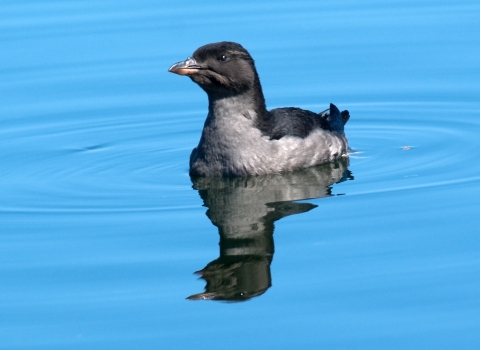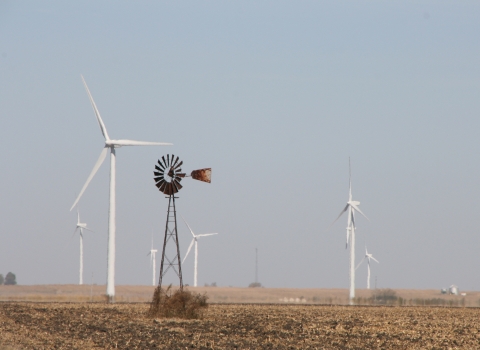Columbia, N.C. — The U.S. Fish and Wildlife Service released the Pocosin Lakes National Wildlife Refuge Water Management Plan on Aug. 8, 2023, which provides a roadmap for refuge management in the coming years in a way that provides a clear understanding of the interconnectedness of water movement through the refuge and communities surrounding it.
The plan, which incorporates the diverse perspectives shared by members of the local community, includes strategies for expanding stakeholder engagement efforts and developing new educational tools. It identifies a series of complementary and supportive strategies aimed at broadening the understanding of water movement on the landscape across private lands, identifying barriers to water movement or other issues across the landscape.
As these barriers to water movement or other issues are identified, the plan also identifies opportunities for incentive programs and other possible solutions for addressing barriers and issues in the future. Focal areas described in the plan include water management infrastructure on the refuge, system functions and limitations, and management strategies to meet the goals and objectives outlined in the refuge’s Comprehensive Conservation Plan and protect Service investments in restoration.
“Pocosin Lakes National Wildlife Refuge is an integral part of the fabric of the communities surrounding it. The plan, while informed by the unique environmental conditions at the refuge, was also informed by input from the community. Landowners and others shared their insights and perspectives during a public-comment period, and we look forward to continuing to be inclusive, open, and transparent in our ongoing conversations with adjacent landowners and others,” said Rebekah Martin, project leader of the Coastal North Carolina National Wildlife Refuge Complex
Pocosin is a Native American term meaning “swamp on a hill.” These wetlands occur on peat domes and are at slightly higher elevations than the surrounding lands. Since the refuge’s establishment in 1990, the Service has implemented several restoration projects to counteract the impacts of an extensive ditch system. Once drained, this system artificially dried out the peat soil, altering pocosin habitat and making the areas more susceptible to catastrophic wildfire. Pocosin wetlands on the refuge provide high quality habitat for wetland-dependent wildlife, reduce the chances of catastrophic wildfire, ease storm impacts, and repel the increasing threat of saltwater intrusion in northeastern North Carolina.
The refuge is located within a rainfall-driven system, meaning rainfall is the primary source of water in the system. During extreme weather conditions, the refuge can either experience too much or too little water. Too much rain leads to rapid surface runoff and may cause flooding issues. Too little water can lead to drought conditions, which adversely impacts the highly altered and artificially drained peatlands.
The drier peat soils make the landscape more susceptible to catastrophic, habitat-destroying wildfires which includes ground fire. Ground fires are very expensive to control and can result in severe elevation changes which affect drainage and destroys the native seedbank of native vegetation. Water management is critical for containing and controlling fire and perpetuating healthy pocosin habitats.
“Water management is essential for maintaining the integrity of these important pocosin wetlands,” Martin said “The water management plan is based on the best science that we have now and incorporates nature-based solutions. It also gives us flexibility to adapt our strategies as we learn more from research and other regional hydrological studies. This approach will allow us to reconnect a healthy pocosin landscape and high-quality wildlife habitat.”
Funds from the Inflation Reduction Act of 2022 will be used to implement the water management plan at Pocosin Lakes National Wildlife Refuge. This funding allows the refuge to increase the resiliency of habitats and infrastructure to withstand severe and unanticipated weather events. The water management plan will bolster a resilient system of infrastructure already in place which retains and conserves rainwater to rewet the peat to mimic natural pocosin wetlands.
The Pocosin Lakes National Wildlife Refuge Water Management Plan can be found at: https://fws.gov/media/water-management-plan-and-environmental-assessment-pocosin-lakes-national-wildlife-refuge
For more information about the refuge go to: https://www.fws.gov/refuge/pocosin_lakes/.
The mission of the U.S. Fish and Wildlife Service is working with others to conserve, protect, and enhance fish, wildlife, plants, and their habitats for the continuing benefit of the American people. For more information on our work and the people who can make it happen, visit fws.gov. Connect with the Service on Facebook, follow ourtweets, watch the YouTube Channel and download photos from Flickr.



